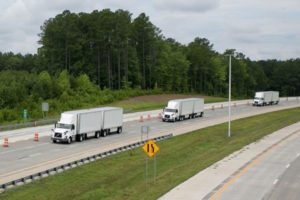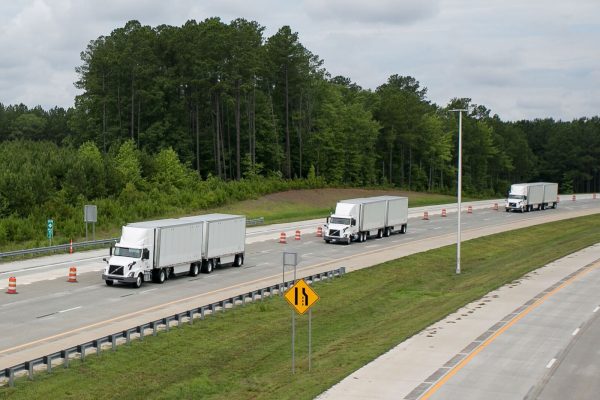The U.S. Transportation Department has given a boost to companies working on automated long-haul trucks, saying an artificial intelligence system could constitute a “driver” under federal trucking rules in a bid to ease barriers to the technology.

The Federal Motor Carrier Safety Administration will no longer assume that a commercial vehicle driver is human, an initial step to allow trucks to travel across state lines piloted by an autonomous driving system, according to the Transportation Department’s “Automated Vehicles 3.0” guidance released Thursday. The safety regulator is also studying how to amend existing rules to better accommodate self-driving systems in commercial vehicles.
At an event announcing the new policy, FMCSA Administrator Ray Martinez said automated trucking technologies have the potential to save thousands of lives and benefit the economy.
“The FMCSA is dedicated to supporting the creativity and innovation required to promote automated driving system, including the reform of regulations that may unnecessarily hinder progress,” Martinez said.
Long-haul trucking, with its hours of cruising in relatively simple highway environments, is is seen as a key opportunity to deploy automated driving technologies. Major truck manufacturers such as Daimler AG and Paccar Inc. are working on automated driving systems for commercial trucks. The field has also attracted several startups, such as Intel Corp.-backed Peloton Technology Inc., which has created technology to help automated trucks safely travel in tight platoons.
In a 2016 test by Uber Technologies Inc.’s Otto unit and Anheuser-Busch InBev Nv, an 18-wheeler with nobody behind the wheel cruised more than 120 miles to deliver a load of beer. At the time, AB InBev said it could save $50 million a year in the U.S. if the beverage giant could deploy autonomous trucks across its distribution network.
The FMSCA’s new interpretation follows a similar move by the National Highway Traffic Safety Administration in 2016, when it told Google officials the agency would view the company’s autonomous technology as a driver under federal auto-safety standards.
Other surface transportation agencies within the Transportation Department will adopt a similar stance as part of the third iteration of the department’s automated-vehicle policy guidance. The update for the first time addresses automation in all modes of surface transportation, including long-haul trucks, transit and rail, in addition to passenger vehicles covered by previous documents.
(With assistance from Shaun Courtney.)
Was this article valuable?
Here are more articles you may enjoy.


 NYC Sues Delivery App Over Lost Pay in New Mamdani Crackdown
NYC Sues Delivery App Over Lost Pay in New Mamdani Crackdown  JPMorgan Wins Gender Pay Gap Dispute Against London Analyst
JPMorgan Wins Gender Pay Gap Dispute Against London Analyst  California Governor Seeks $200M to Replace EV Tax Credits Cut by Trump
California Governor Seeks $200M to Replace EV Tax Credits Cut by Trump  What The Return of California’s ‘Death Discount’ Means for Litigation
What The Return of California’s ‘Death Discount’ Means for Litigation 